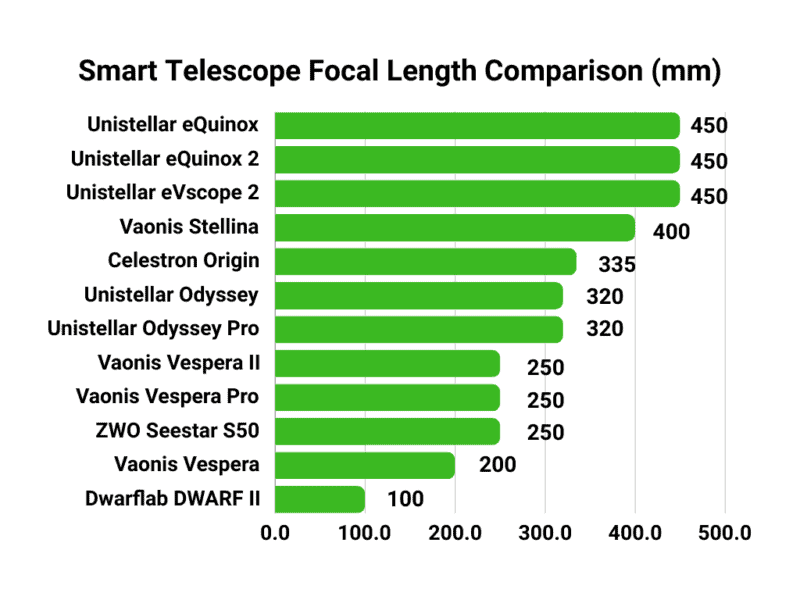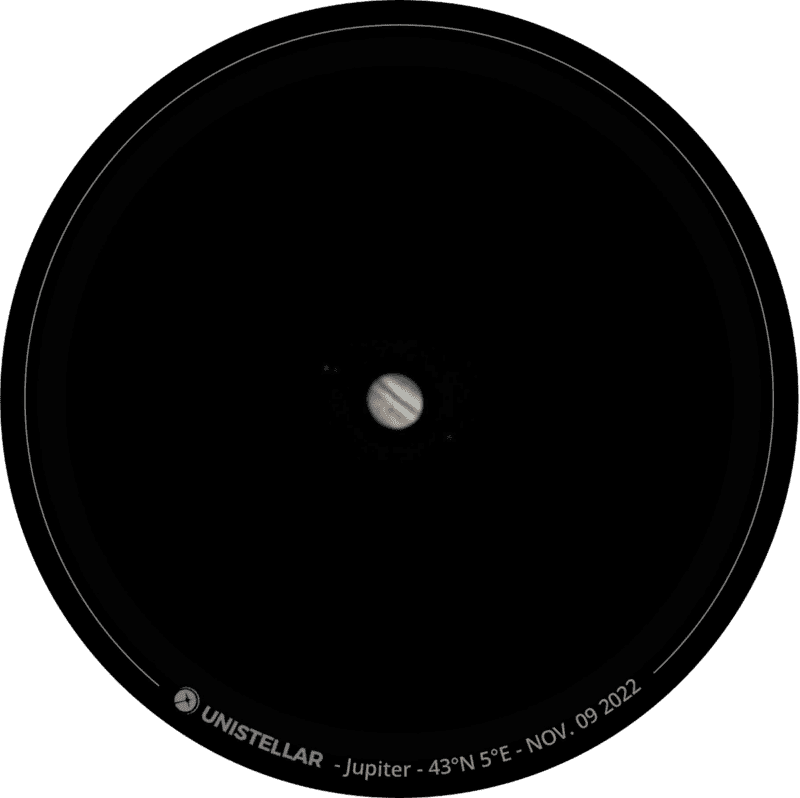I’ll get straight to the point – there is no current smart telescope that is very good at photographing the planets.
Some are good for the sun and the moon, and most are very good for deep sky objects, but when it comes to the planets of our solar system they tend to lack a little.
But why is this?
Why are Smart Telescopes Not Very Good at Photographing Planets?
The main reason for this is that they generally have relatively short focal lengths.
You can see the major models here compared:

Typically, the best telescopes for planetary imaging have long focal lengths (and high apertures).
This is because a long focal length allows them to zoom in with a fairly narrow field of view on these objects that are relatively close (when compared to deep sky objects).
“Vespera is a telescope mainly adapted to deep sky objects: galaxies, clusters, nebulae… The telescope has a focal length of 200mm, which is too small to make the observation of planets interesting.”
Vaonis customer support
What are the Best Telescopes for Photographing Planets?
In research that we did, we found that the best telescopes for planetary imaging were Celestron Schmidt-Cassegrain telescopes. In particular, the 11-inch and 14-inch aperture models.
Just look at the focal length of these models compared to the above data for smart telescopes:
- Celestron C14: 3910 mm focal length
- Celestron C11: 2800 mm focal length
The focal length of the C14 is more than eight times that of the Unistellar eVscope/eQuinox range, which have the longest of any smart telescopes.
What is the Best Smart Telescope for Planets?
The best smart telescopes for planetary photography are those with the longest focal length:
With these models you will be able to capture Jupiter and its moons, as well as Saturn.
They won’t be amazing images, this is just not the forte of the current batch of smart telescopes.

Maybe in the future someone will release a long focal length model specifically to be better at planetary photography but it will likely come with a few of downsides:
- Price: long focal length/high aperture telescopes tend to be expensive
- Weight: long focal length/high aperture telescopes are big and heavy. This also means a higher capacity mount needed which will further increase cost.
- Deep sky imaging: a longer focal length comes at cost of a slower focal ratio which will mean that it will not perform as well at deep sky astrophotography.
This is why smart telescopes tend to be good at deep sky imaging but not planetary, even budget models like the ZWO Seestar S50 and Dwarflab Dwarf 2.
Please let me know if you have any comments or questions.
You can find more content like this in our smart telescopes hub.


